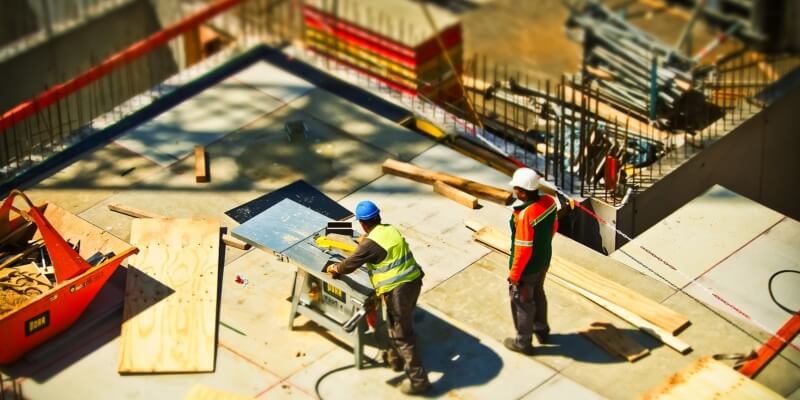Hogyan változik az életmódváltás a jövő ingatlanpiacán?


Nyugat-Európa-szerte és különösen a zsebeiben UK, the cost of housing has risen and risen. This has meant that getting onto the property ladder has seemed like an unassailable dream for many. Of course, upgrading your living space has traditionally meant selling your current property, increasing your mortgage and purchasing a slightly larger place to live. After all, that is why it is called a property ladder! However, the augmented prices we have seen in the last decade or so mean that even very modest increases – from a two-bedroom flat to a three-bedroom semi-detached house, for example – has meant such a huge financial commitment that many people just cannot afford to move. As well as the capital investment you need to make there are professional and estate agency fees to be paid. You can understand why there is such a brake on people upgrading.
Of course, it is not just about the underlying market conditions. Lifestyle changes from today’s generation of homeowners and the role of modern architectural ideas are part of the shifting trend, too. How will the property market of the future operate given the demands that there are on the housing stock that is available to buy?
1. Flexible Living Spaces
Apartments that grow with your needs could be the future of flexible accommodation according to Oona Horx-Strathern, a trend consultant and author of ‘Home Report 2019’, published in Németország. She proposes an architectural model in which the internal furnishings and even walls can be shifted around to meet different demands at different times. Some Japanese apartments already have such flexibility designed into them. Horx-Strathern says that this form of living could easily be adopted in social housing projects in Europe.
2. Communal Living
Given the aforementioned problems with private ownership that many people know only too well, more sharing is likely to become part of the housing mix in the future. Sharing your entire home with another family may not be the way forward. However, shared facilities and even kitchens could be a good way of getting more living space from a development. If that is not practical, then certainly shared gardens and grounds will be the way forward for anyone who lives in apartments.
3. Small-Scale Living Spaces
Will people be satisfied with simply living in smaller places in the future? If you look at some of the lifestyle choices in very intensely populated cities, like New York City and Tokyo, then it is certainly possible that developers will devote less and less square metres for each dwelling they design. Having said that, smaller homes are only likely to appeal beyond a short-term basis if very clever use of upward space is built into the design. As such, few houses will be built with a standard loft space that is merely designed to provide storage. Nearly all homes will have an additional living space or bedroom built into the attic in order to maximise the potential of the property’s available space.
4. Digital Lifestyles
The growth of digitisation is everywhere in home life nowadays. You can find examples of the digital lifestyle at home in things like online casinos, movie streaming services and virtual places to meet up online. Given that so many people engage with their social worlds and entertainment via a screen and a digital service, there is much less requirement to upgrade their properties to engage in their pursuits. In the past, people wanted to buy a larger place to live simply because they wanted to entertain or engage in a hobby. These days, nearly all such activities can be conducted online which means that there is less desire to move in the first place. Why move if you have everything you need via your Internet connection?
5. Declining Childbirth Rates
Of course, an undeniable driver for moving along the property ladder has always been to meet the needs of a growing family. This remains the case. However, people are tending to have fewer children than ever before. In fact, lots of people choose to live alone these days and do not maintain a long-term partnership let alone having children. Those that do often find that they can often stay in place if they restrict themselves to just one child. Furthermore, where children are a reason to move, modern lifestyles tend to dictate that people have them later in life than they used to. In turn, this places less pressure on the housing market to generate an affordable ladder upwards for so many people.
6. The Flexibility of Renting
Lettings offer greater flexibility for people because you can adjust your dwelling according to multiple needs. Buying and selling property means lots of professional advice and costs as well as the big decision of which location you will commit to. On the other hand, people who want more flexibility about the size of their home and where they will live and work have traditionally preferred to rent. In the future, it is likely that renting over the course of an entire lifetime is going to become more and more popular – so long as house prices remain high, of course.

For those who cannot afford to purchase their home but still want to invest in the housing market as a way of building a nest egg for the future, shared ownership tenures offer the best of both worlds. Unheard of in much of the UK even a couple of decades ago, more and more property is developed specifically for the shared ownership market. Expect housing developers to continue to construct these sorts of residences for some time to come.
Spin Palace No Deposit kaszinó bónuszok >>

Forrás: spinpalace.com
